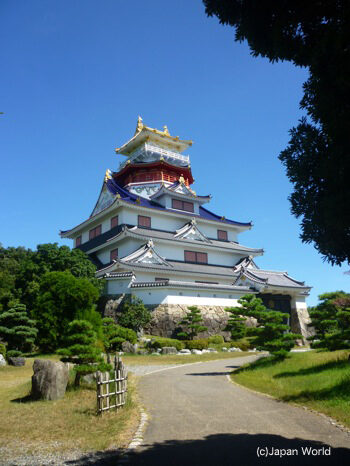The 500 year old Tsushima Tenno Festival is one of Japan’s three major river festivals and is one of the biggest, most spectacular and beautiful of all summer festivals.
Staged on the fourth Saturday of July every year on the Tenno River in Tsushima, Aichi Prefecture, the Tsushima Tenno Festival was said to have been a favorite of local war-lords Oda Nobunaga and Toyotomi Hideyoshi, and today has been designated a Nationally Intangible Folk Cultural Asset.
Hideyoshi was so enamored with the festival, when he built Fushimi Castle south of Kyoto, he had planned on launching a similar festival on the Yodo River.

Tsushima is a small city, just west of Nagoya. Apart from the Tenno Festival, Tsushima is famous for its Autumn Festival and Wisteria Festivals, which also boast equally long histories and traditions.
Tsushima’s other claim to fame is the fact that there are more temples in Tsushima than there are in Kyoto!
The Night Festival

However, it is that fourth Saturday evening of July, the night of the “Yoimatsuri”, the Night Festival, and the celebrations that continue the next day with the “Asamatsuri”, or Morning Festival that has every one Tsushima bound.
The festival begins around sunset with exciting displays of antique samurai matchlock gun firing and hand held fireworks resembling upright bazookas sending fire, sparks and smoke tens of meters into the air. Singing and dancing also takes place before the highlight of the festival takes to the water.
Five large and graceful traditional Makiwara boats, being two boats strapped together with purified straw ropes and decorated with over 400 large paper lanterns arranged on three-meter-long bamboo poles in a dome-like shape supposed to represent a mountain, glide along the Tenno river, to the accompaniment of festival flute players. The reflections of the hundreds of lanterns in the dark, calm waters add to the ethereal effect.

The five boats represent the five former villages that made up Tsushima. The dome-shaped arrangement of 365 lanterns, one for each of the days in the year, features a further 12 or 13 lanterns displayed like antennae above it.
Under the orange-yellow dome of lanterns hang a further 30 red lanterns. More lanterns decorate the bow of this floating festival float, giving it the impression of a silent, low-flying UFO. It takes over an hour to light all the candles within the paper lanterns.

Many come dressed in light summer kimono called Yukata to watch from the riverside, others take to small boats to enjoy a meal, drinks, and entertainment. All the while, cameras click as the lantern-lit boats sail by, and fantastic fireworks roar like thunder in the sky above.
The Morning Festival
The next morning, the same five Makiwara boats are redecorated with gorgeous red, black, and gold hand-woven tapestries and mannequins dressed in Noh costumes.
These boats are joined by a sixth, known as the “Ichieguruma” from neighboring Higashiho-Cho. This boat too is decorated with dolls representing characters from Noh, Japan’s traditional performing arts. Also on board are ten men, armed with cloth-covered halberds.
These ten have been specially chosen to take part in a ritual, whereby they dive off the boat with the halberd, before swimming, or walking to shore to present the broad-bladed pole-arm to the gods of the Tsushima Shrine.
Like most Japanese festivals, the rest of the day is filled with various displays, events, food, and enjoyment.

Tushima Shrine
If you find yourself in Japan in late July, be sure to be in Tsushima for both days of one of Japan’s biggest and most spectacular festivals, the Tsushima Tenno Matsuri. It’s an awe-inspiring sight on a hot summer’s night!

